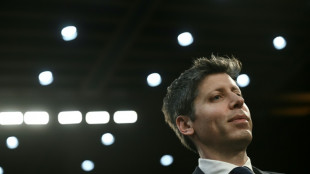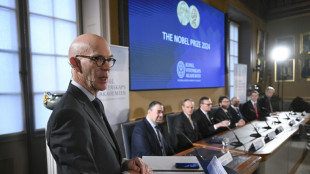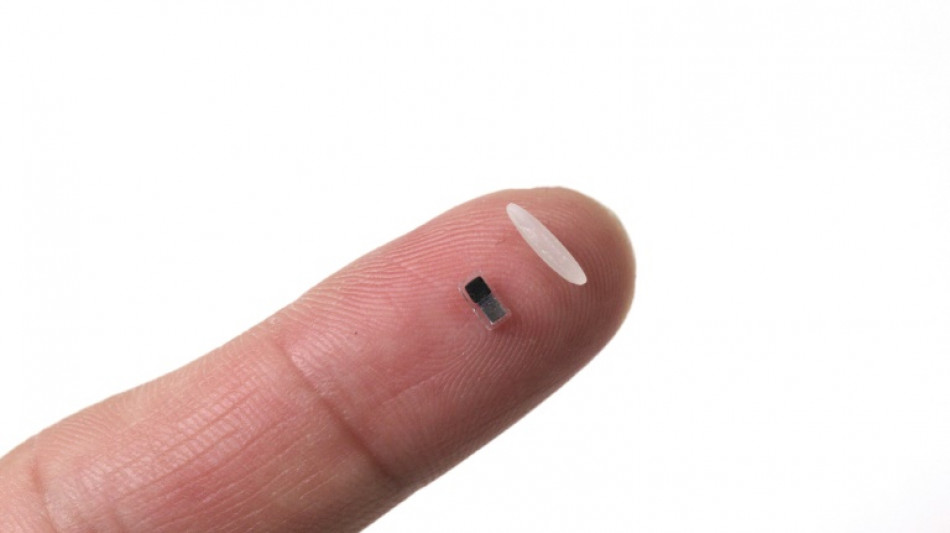
-
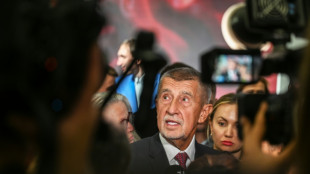 Babis to meet Czech president after party tops parliamentary vote
Babis to meet Czech president after party tops parliamentary vote
-
Death toll from Indonesia school collapse rises to 37

-
 OPEC+ meets with future oil production hanging in the balance
OPEC+ meets with future oil production hanging in the balance
-
Dodgers down Phillies on Hernandez homer in MLB playoff series opener

-
 Philadelphia down NYCFC to clinch MLS Supporters Shield
Philadelphia down NYCFC to clinch MLS Supporters Shield
-
Syria selects members of first post-Assad parliament in contested process

-
 Americans, Canadians unite in battling 'eating machine' carp
Americans, Canadians unite in battling 'eating machine' carp
-
Negotiators due in Cairo for Gaza ceasefire, hostage release talks

-
 Trump authorizes troops to Chicago as judge blocks Portland deployment
Trump authorizes troops to Chicago as judge blocks Portland deployment
-
Wallabies left ruing missed chances ahead of European tour

-
 Higgo stretches PGA Tour lead in Mississippi
Higgo stretches PGA Tour lead in Mississippi
-
Blue Jays pummel Yankees 10-1 in MLB playoff series opener

-
 Georgia ruling party wins local polls as mass protests flare
Georgia ruling party wins local polls as mass protests flare
-
Depoortere stakes France claim as Bordeaux-Begles stumble past Lyon

-
 Vinicius double helps Real Madrid beat Villarreal
Vinicius double helps Real Madrid beat Villarreal
-
New museum examines family life of Mexican artist Frida Kahlo

-
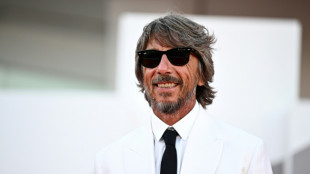 Piccioli sets new Balenciaga beat, with support from Meghan Markle
Piccioli sets new Balenciaga beat, with support from Meghan Markle
-
Lammens must be ready for 'massive' Man Utd scrutiny, says Amorim
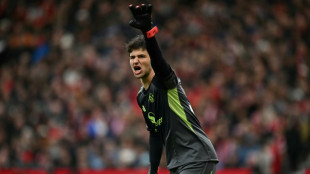
-
 Arteta 'not positive' after Odegaard sets unwanted injury record
Arteta 'not positive' after Odegaard sets unwanted injury record
-
Slot struggles to solve Liverpool problems after third successive loss

-
 Netanyahu hopes to bring Gaza hostages home within days as negotiators head to Cairo
Netanyahu hopes to bring Gaza hostages home within days as negotiators head to Cairo
-
Ex-NFL QB Sanchez in hospital after reported stabbing

-
 Liverpool lose again at Chelsea, Arsenal go top of Premier League
Liverpool lose again at Chelsea, Arsenal go top of Premier League
-
Liverpool suffer third successive loss as Estevao strikes late for Chelsea

-
 Diaz dazzles early and Kane strikes again as Bayern beat Frankfurt
Diaz dazzles early and Kane strikes again as Bayern beat Frankfurt
-
De Zerbi living his best life as Marseille go top of Ligue 1

-
 US envoys head to Mideast as Trump warns Hamas against peace deal delay
US envoys head to Mideast as Trump warns Hamas against peace deal delay
-
In-form Inter sweep past Cremonese to join Serie A leaders

-
 Kolisi hopes Rugby Championship success makes South Africa 'walk tall' again
Kolisi hopes Rugby Championship success makes South Africa 'walk tall' again
-
Ex-All Black Nonu rolls back the years again as Toulon cruise past Pau

-
 Hundreds of thousands turn out at pro-Palestinian marches in Europe
Hundreds of thousands turn out at pro-Palestinian marches in Europe
-
Vollering powers to European women's road race title

-
 Struggling McLaren hit bump in the road on Singapore streets
Struggling McLaren hit bump in the road on Singapore streets
-
'We were treated like animals', deported Gaza flotilla activists say

-
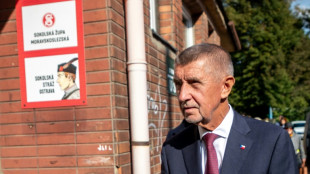 Czech billionaire ex-PM's party tops parliamentary vote
Czech billionaire ex-PM's party tops parliamentary vote
-
Trump enovys head to Egypt as Hamas agrees to free hostages

-
 Arsenal go top of Premier League as Man Utd ease pressure on Amorim
Arsenal go top of Premier League as Man Utd ease pressure on Amorim
-
Thousands attend banned Pride march in Hungarian city Pecs

-
 Consent gives Morris and Prescott another memorable Arc weekend
Consent gives Morris and Prescott another memorable Arc weekend
-
Georgian police fire tear gas as protesters try to enter presidential palace

-
 Vollering powers to European road race title
Vollering powers to European road race title
-
Reinach and Marx star as Springboks beat Argentina to retain Rugby Championship
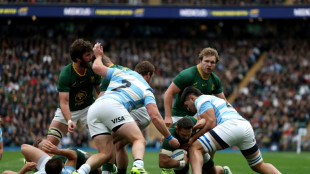
-
 Russell celebrates 'amazing' Singapore pole as McLarens struggle
Russell celebrates 'amazing' Singapore pole as McLarens struggle
-
Czech billionaire ex-PM's party leads in parliamentary vote
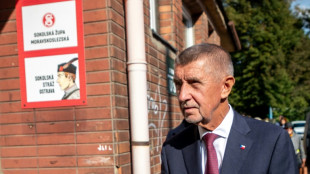
-
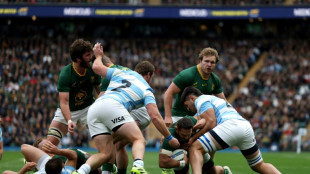 South Africa edge Argentina to retain Rugby Championship
South Africa edge Argentina to retain Rugby Championship
-
'Everyone's older brother': Slipper bows out in Wallabies loss

-
 Thousands rally in Georgia election-day protest
Thousands rally in Georgia election-day protest
-
Sinner starts Shanghai defence in style as Zverev defies toe trouble
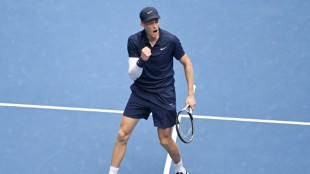
-
 Russell takes pole position for Singapore Grand Prix as McLaren struggle
Russell takes pole position for Singapore Grand Prix as McLaren struggle
-
Robertson praises All Blacks 'grit' in Australia win


World's tiniest pacemaker is smaller than grain of rice
Scientists said Wednesday they have developed the world's tiniest pacemaker, a temporary heartbeat regulator smaller than a grain of rice that can be injected and controlled by light before dissolving.
While still years away from being tested in humans, the wireless pacemaker was hailed as a "transformative breakthrough" that could spur advances in other areas of medicine.
Millions of people across the world have permanent pacemakers, which stimulate hearts with electrical pulses to ensure they beat normally.
The US-led team of researchers behind the new device said they were motivated to help the one percent of children born with congenital heart defects who need a temporary pacemaker in the week after surgery.
The pacemaker could also help adults restore a normal heartbeat as they recover from heart surgery.
Currently, temporary pacemakers require surgery to sew electrodes onto heart muscles, with wires connecting to a powered device on the patient's chest.
When the pacemaker is no longer needed, doctors or nurses pull out the wires, which can sometimes cause damage.
Neil Armstrong, the first person to walk on the Moon, died from internal bleeding after his temporary pacemaker was removed in 2012.
But the newly developed pacemaker is wireless. And at just one millimetre thick and 3.5 millimetres long, it can fit into the tip of a syringe.
It has also been designed to dissolve into the body when no longer needed, sparing patients invasive surgery.
- 'Significant leap forward' -
The pacemaker is paired to a soft patch worn on the patient's chest, according to a study describing the device in the journal Nature.
When the patch detects irregular heartbeats, it automatically flashes light that tells the pacemaker what heartbeat it should stimulate.
The pacemaker is powered by what is called a galvanic cell, which uses the body's fluids to convert chemical energy into electrical pulses that stimulate the heart.
So far, the pacemaker has worked effectively in tests on mice, rats, pigs, dogs and human heart tissue in the lab, according to the study.
Senior study author John Rogers of Northwestern University in the United States told AFP he estimated the pacemaker could be tested in humans in two to three years.
His lab has launched a start-up to pursue this goal, he added.
In the future, the underlying technology could also "create unique and powerful strategies to address societal challenges in human health," Rogers said.
Bozhi Tian, whose lab at the University of Chicago has also developed light-activated pacemakers but was not involved in the latest research, called it a "significant leap forward".
"This new pacemaker is a transformative breakthrough in medical technology," he told AFP.
"It's a paradigm shift in temporary pacing and bioelectronic medicine, opening up possibilities far beyond cardiology -- including nerve regeneration, wound healing and integrated smart implants."
Heart disease is the world's leading cause of death, according to the World Health Organization.
C.Bruderer--VB



